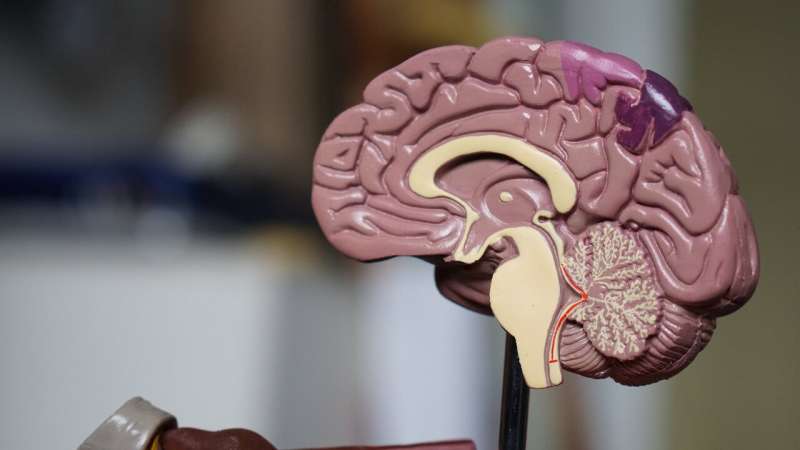Credit: Unsplash/CC0 Public Domain
UCLA researchers have pinpointed a second hand to the brain's internal clock. By revealing how and where the brain counts and represents seconds, the UCLA discovery will expand scientists' understanding of normal and abnormal brain function.
Tracking the passage of time to the second is critical for motor control, learning and cognition, including the ability to anticipate future events. While the brain depends on its circadian clock to measure hours and days, the circadian clock does not have a second hand.
Instead the brain measures seconds through changing patterns of cellular activity. Much like a line of falling dominoes, each neuron activates the next, and time is marked by the neuron that is currently active. By analogy, if a sequence of falling dominoes takes 10 seconds from start to finish, one can deduce that 5 seconds has elapsed when the middle domino falls.
UCLA neuroscientists introduced mice to two different scents. The mice learned that one odor predicted the arrival of a sweet liquid reward after three seconds, while the other odor predicted a reward after six seconds. The mice started licking the spout earlier in anticipation of the reward after they sniffed the first scent than when they smelled the second.
Recordings in the striatum and premotor cortex of the brain revealed that changing patterns of neural activity in both regions encoded time—consistent with the notion that the brain has multiple clocks. But the pattern in the striatum was closer to the sequence of falling dominoes—a pattern referred to as a neural sequence—compared to the patterns in a motor area that provides input to the striatum.
Timing is a fundamental part of human behavior, learning and thought. By revealing how and where the brain counts and represents seconds, the UCLA discovery will deepen scientists' understanding of normal and abnormal brain function.
The journal Neuron published the findings.
More information: Shanglin Zhou et al, Neural Sequences as an Optimal Dynamical Regime for the Readout of Time, Neuron (2020). DOI: 10.1016/j.neuron.2020.08.020
Journal information: Neuron
Provided by University of California, Los Angeles
























